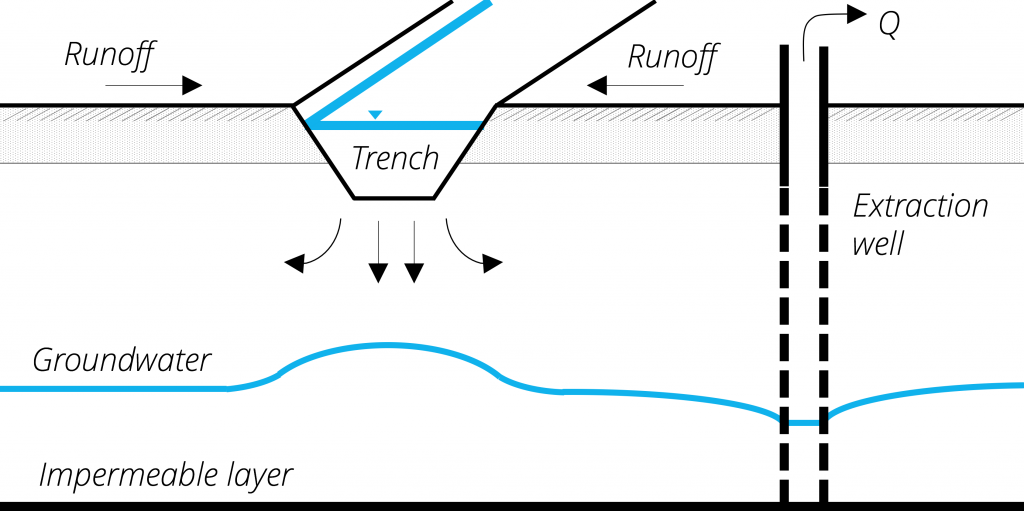 Rainwater harvesting is being increasingly used to collect precipitation water. The ideas of trenches is to obstruct surface runoff from catchments and concentrate the water to be infiltrated. The collected rainwater can be recharged through trenches, ditches and pits. These structures are easy to built and maintain and very adaptable.
Rainwater harvesting is being increasingly used to collect precipitation water. The ideas of trenches is to obstruct surface runoff from catchments and concentrate the water to be infiltrated. The collected rainwater can be recharged through trenches, ditches and pits. These structures are easy to built and maintain and very adaptable.
| Typical system capacity scale | Family to Village (10²-10³ m³/a) |
| Geology | Unconfined aquifers. |
| Topography | Rural areas with gently slopes. |
| Soils | Sandy soils. |
| Water source | Rain water. |
| Pre-treatment | None. |
| MAR main objective | Strategic water storage. |
| Cost | Low. |
Advantages and disadvantages of the system (adapted from IGRAC, 2007):
Advantages
- Low cost and simple design.
- Prevention of soil erosion.
Limitations
- Water quality might be problematic (fertilizer).
- Relatively small infiltration quantities.
Case studies
Further information
- http://akvopedia.org/wiki/Water_Portal_/_Rainwater_Harvesting_/_Groundwater_recharge_/_Contour_trenches
- https://www.sswm.info/category/implementation-tools/water-sources/hardware/precipitation-harvesting/field-trenches
References
- IGRAC. (2007). Artificial Recharge of Groundwater in the World.
- DEMEAU. (2014). Characterization of European managed aquifer recharge (MAR) sites – Analysis.
